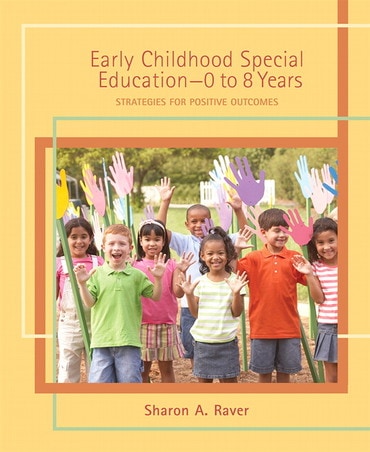Switch content of the page by the Role togglethe content would be changed according to the role

Early Childhood Special Education (0 to 8 Years): Strategies for Positive Outcomes, 1st edition
Published by Pearson (March 3, 2008) © 2009
- Sharon A. Raver
Paperback
$101.32
Price Reduced From: $126.65
ISBN-13: 9780131745988
Early Childhood Special Education (0 to 8 Years): Strategies for Positive Outcomes
Published 2008
Need help? Get in touch